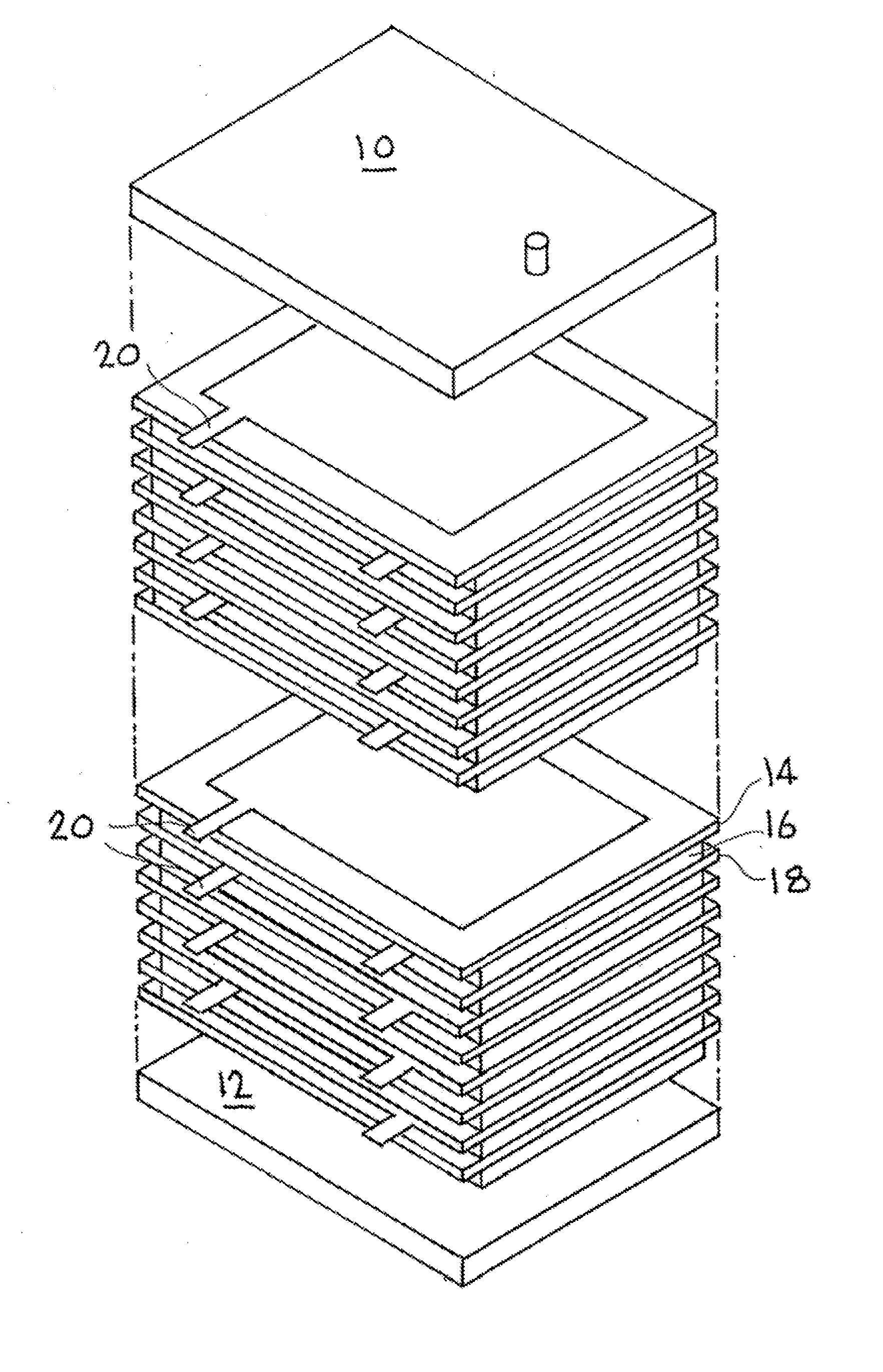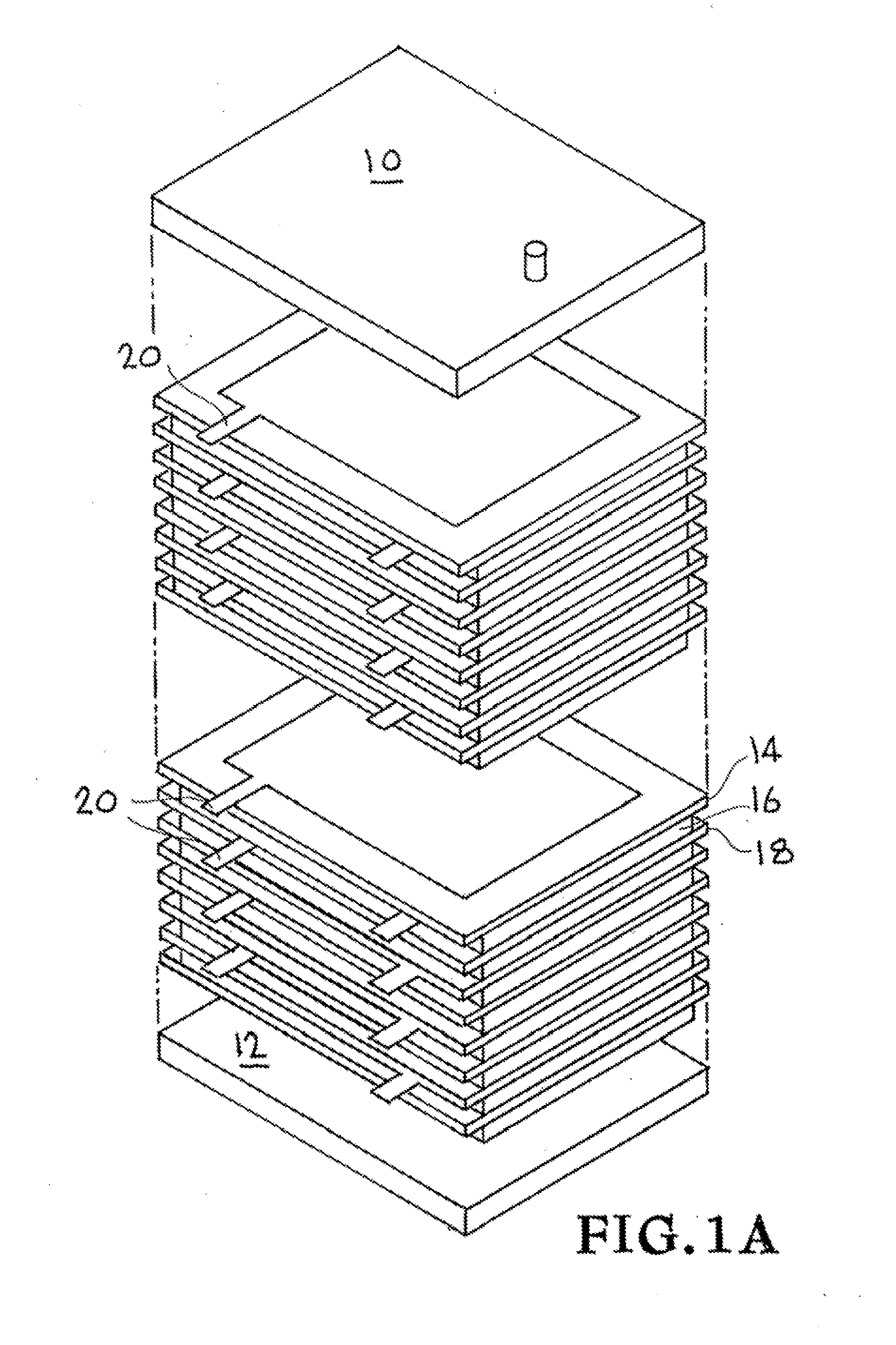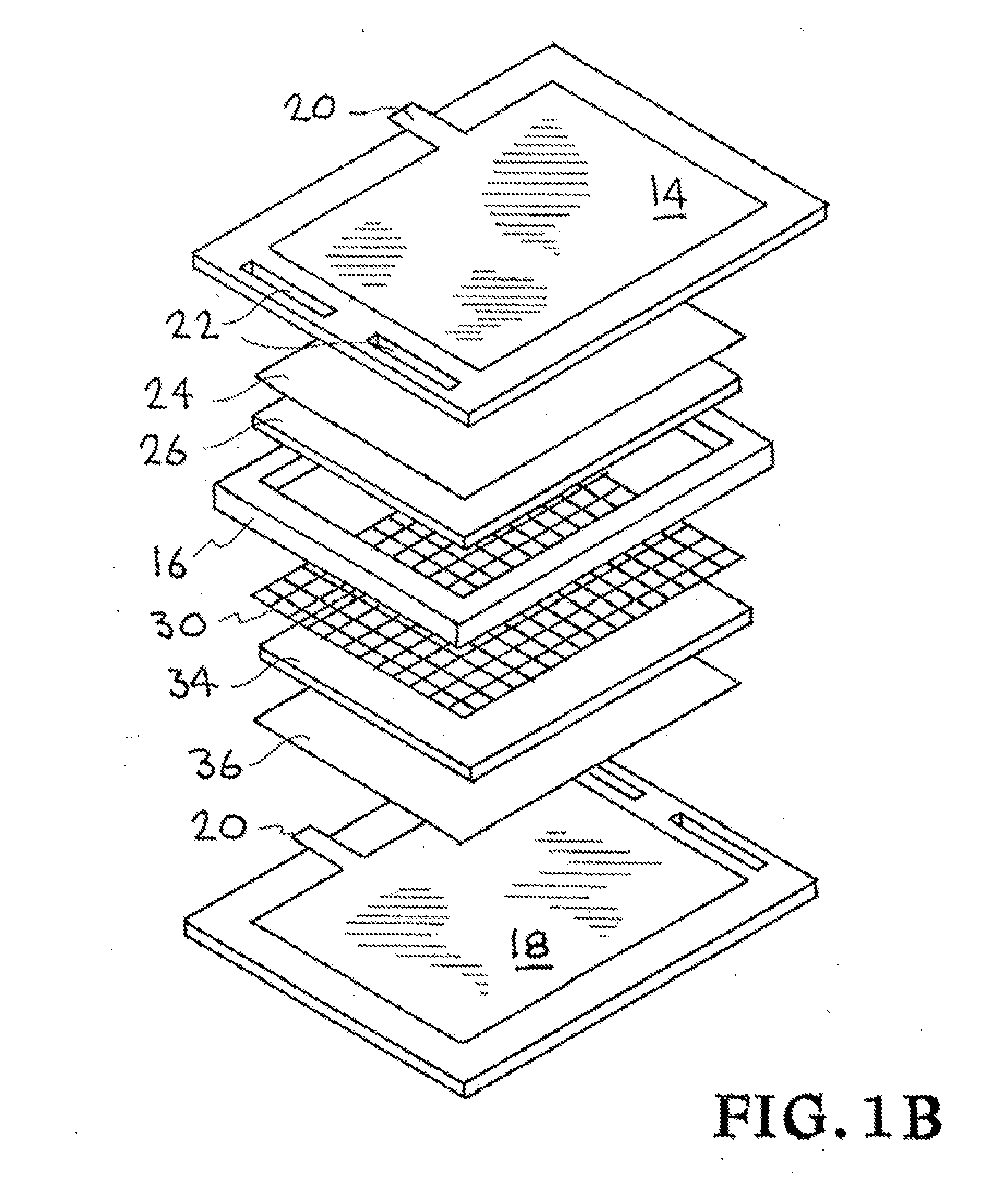Capacitive de-ionization electrode
a deionization electrode and electrode technology, applied in the direction of fluid pressure measurement, liquid/fluent solid measurement, peptide, etc., can solve the problems of many other electrode surface materials that have yet to be tested, rapid reduction of electrical and/or mechanical properties, and time-consuming process, so as to reduce fabrication costs, reduce manufacturing costs, and facilitate the effect of electrode substrate replacemen
- Summary
- Abstract
- Description
- Claims
- Application Information
AI Technical Summary
Benefits of technology
Problems solved by technology
Method used
Image
Examples
Embodiment Construction
[0021]The invention provides new electrode fabrication and reactor configurations that reduce capitol costs, increase efficiency, and enable the replacement of electrode surface accompaniments. The new electrode support structures incorporate standard circuit board technology which has been tailored to create an electrode that resists corrosion, is fabricated commercially (and inexpensively), is easily assembled, reduces the risk of short circuiting, and allows for easy replacement of electrode substrate material. The electrode supporting structure can be made, e.g., of fiberglass-reinforced resin with a metal clad conductive surface. This is typically referred to as “FR4” PCB board in the circuit board industry. The conductive surface extends to the edge of the board in one or more locations to facilitate the connection of electrical power. The configuration of the new electrode “cell” consists of the fiberglass electrode support structure with the metal cladding (typically copper,...
PUM
| Property | Measurement | Unit |
|---|---|---|
| thick | aaaaa | aaaaa |
| thick | aaaaa | aaaaa |
| surface area | aaaaa | aaaaa |
Abstract
Description
Claims
Application Information
 Login to View More
Login to View More - R&D
- Intellectual Property
- Life Sciences
- Materials
- Tech Scout
- Unparalleled Data Quality
- Higher Quality Content
- 60% Fewer Hallucinations
Browse by: Latest US Patents, China's latest patents, Technical Efficacy Thesaurus, Application Domain, Technology Topic, Popular Technical Reports.
© 2025 PatSnap. All rights reserved.Legal|Privacy policy|Modern Slavery Act Transparency Statement|Sitemap|About US| Contact US: help@patsnap.com



